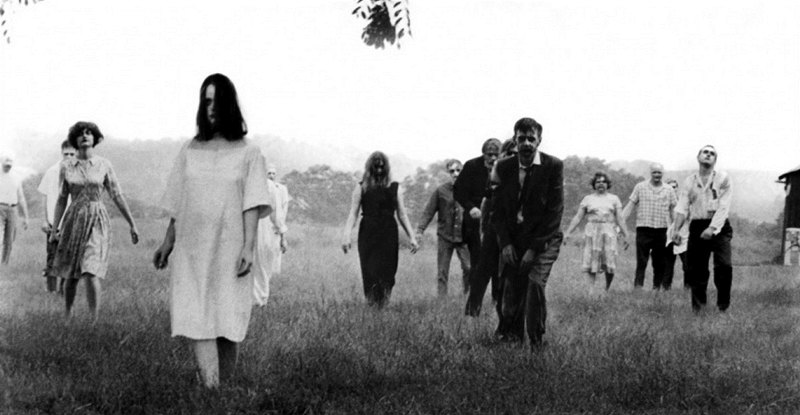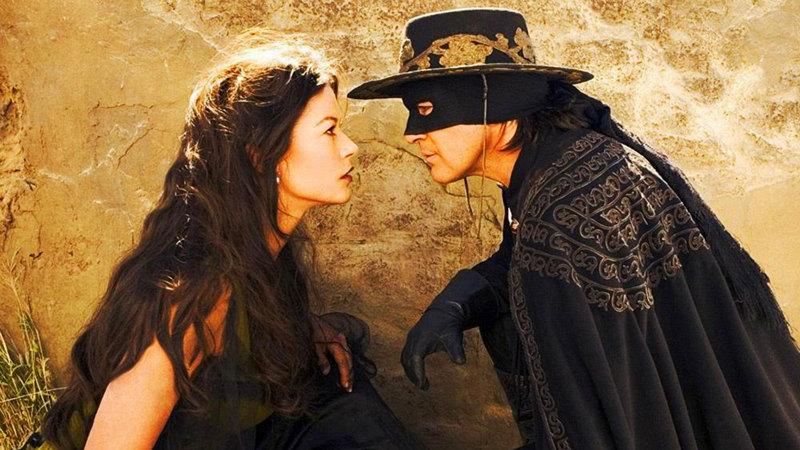One of my numerous shortcomings as a film viewer is a severely limited tolerance for films featuring hyper-macho, confrontational characters. I’m certain “Goodfellas” is a masterpiece, but the constant preening and “I’m here to fucking amuse you?” screeching have always held me at a distance as thoughts of “STFU!” run through my head and I tune out everything else.
I had a similar initial reaction to Matthieu Kassovitz’s “La haine” (“Hate,” 1995) with its trio of perma-aggro French teens who make sure to get right in the faces of everyone who crosses their line of vision and talk non-stop trash. “Fuck yo’ mamma!” is the oft-played refrain. On subsequent viewings, however, I can’t help but be swayed by the film’s remarkably efficient and convincing way of showing exactly why it’s so important to these young men that the whole wide world knows exactly how fucking angry they are.
“La haine” was inspired by the 1993 killing of Makome M’Bowole, a 17-year old from Zaire who was “accidentally” shot while in police custody. In the film, a young man named Abdel is shot by police and remains hospitalized in critical condition, prompting rioting in a banlieue (a Parisian suburb/high-rise project) populated mostly by Arab and African immigrants and their French-born children who remain isolated and stigmatized by a dominant insular culture that doesn’t consider them to be truly French.
The film skims over the riots (seen in newsclips in the opening) and focuses on three teens scoping out the immediate aftermath. Said (Said Taghmaoui), Hubert (Hubert Kounde) and Vinz (Vincent Cassel) comprise a virtually uncommented-upon swath of diversity from the banlieue (Arab, Black, and “phony Jew boy,” respectively, and using some of the film’s language) who are united by their identity as kids from the projects. It’s an identity that allows them to present a united front, us against them, a much-needed source of cohesion for young men whose boiling rage against the machine sometimes threatens to turn them against each other.
Hubert has learned to channel his anger into a budding career as a boxer, but when his gym is burned down during the rioting, his fall from temporary grace is set into motion; his low-simmer brooding turns increasingly sinister. Vinz, the loosest cannon of the bunch, takes his cue from the movies, and styles himself a latter-day Travis Bickle… at least when he’s playing around in front of the mirror; he vows that if Abdel dies in the hospital, he will kill a cop and proudly do his time in jail as a hero. Fast-talking Said never shuts up, but seems to be a bit more easy-going than his buddies, and is more interested in killing time than in protesting.
And for the most part, that’s what they do, just knocking about the roofs and streets of their high-rise projects before venturing into central Paris, as on-screen titles indicate the halting passage of time. The narrative is otherwise rather loosely structured, with the subplot of a lost policeman’s gun gradually assuming a greater prominence. As they bump into the police, a strung-out drug dealer, skinheads and, most terrifying of all, an art-gallery reception, the drama occasionally builds to what seems to be a looming catharsis only to diffuse once again as each crisis passes. They pose as tough guys, shout, play with guns, and issue loud but idle threats, but mostly they’re just marking yet another 24 hours in the same place they’ve marked all their other 24 hours, and even a few violent confrontations (including a brutal police interrogation) appear unlikely to bring about any momentous change in their routine… until things change quite momentously.
Kassovitz spent a lot of time in the neighborhood he filmed in, and the decision to print the film in black-and-white (it was shot in color) pays off big time. The concrete courtyards and crumbling high-rises are captured with an audiovisual vibrancy that explains the film’s enduring resonance just as much as the story and the characters. The young actors may not be asked for much nuance, but they are thoroughly convincing as alienated and agitated youths. The conveniently manufactured ending is a let-down, but the display of raw emotion and kinetic energy lingers with the viewer long after the film is over.
Video:
The film is presented in its original 1.85: aspect ratio. In the opening scenes, you might be wondering if there was some problem with this 1080p transfer as the grainy newsreel footage looks unusually blocky, but once the film jumps into the narrative proper, you can see just how sharp this transfer is. It was shot on color and printed in black-and-white, and the b&w contrast here is quite vivid. If anything it looks a bit too glossy, losing some of the grubby texture of the film, but that’s nitpicking.
Audio:
The DTS-HD Master Audio 5.1 mix doesn’t use the surround channels too extensively, but it still has a dynamic feel to it, especially one of the better known scenes when a DJ blasts a mix of rap and Edith Piaf through the high-rise complex. I didn’t notice any distortion or any hint of damage from this very clean audio mix. Optional English titles support the French audio.
Extras:
All of the extras are imported from Criterion’s 2007 SD release.
The film is accompanied by a commentary track by Kassovitz, originally recorded for Criterion in 2006.
Jodie Foster championed the film for U.S. distribution and speaks of her enthusiasm in a 15-minute introduction.
“Ten Years of ‘La Haine’” is a feature-lengthy documentary (2005, 83 min.) from Studio Canal which details the events that prompted “La Haine,” it controversial and popular release, and its effect both on film and on French society ten years later. It includes interviews with the director and cast members.
In “Social Dynamite,” several sociologists talk about the realism of the film’s banlieue setting and its importance as social representation (34 min.)
The disc also includes a couple short on-set featurettes (“Preparing for the Shoot” and “The Making of A Scene,” both 6 min.) as well as a very short selection of Deleted and Extended Scenes (just a few minutes apiece). We also get a Stills Gallery and two Trailers.
The 20-page insert booklet includes an essay by critic Ginette Vincendeau and a brief capsule by director Costa-Gavras which was originally included in the 2006 program booklet of the Toronto International Film Festival.
Film Value:
It’s hard to believe it’s been almost two decades since “La haine” took Cannes and then many other film markets by storm, and became a cultural touchstone in France with politicians on all sides of the aisle railing against it or supporting it. Criterion’s high-def release doesn’t offer any new extras from its 2007 SD release, but the 1080p transfer is sharp.


